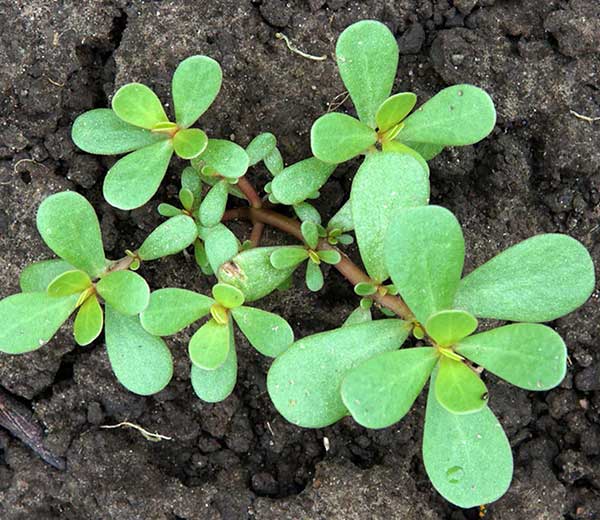Purslane in your garden: 8 reasons not to kill it!
Purslane is a plant that grows in gardens like a weed. Most people tend to get rid of it as soon as it starts growing, however, this plant offers many benefits that very few people know about. Here are 8 good reasons to grow purslane in your garden:

Purslane is an annual herbaceous plant that forms clumps. It has long, creeping stems and is covered with small, round, oily, soft green leaves. Between July and October it is adorned with small yellow flowers. We enjoy its fresh leaves which have a slightly acidic and spicy taste. It grows spontaneously in the gardens of the South of France, but it is possible to grow it in your garden, or in a pot, if your soil is not suitable!
Purslane (Portulaca oleracea L.) spreads its succulent stems, whose fleshy tissues are rich in water, at ground level in late summer. Wrongly considered a weed, it is actually one of the oldest vegetable plants. Imported from the East by the Romans, then abandoned over time, it has become naturalised in our gardens. Jean-Baptiste de La Quintinie, Louis XIV’s gardener, had empirically intuited the excellent nutritional properties of purslane and considered it a “healthy salad”. It is also a bioindicator plant, i.e. it provides information on the nature of the soil. If it is very present, it is because the soil is too compact, lacks air and is deficient in calcium. It also testifies to a dry substrate in summer and which has difficulty in fixing elements.
8 good reasons to grow purslane in your garden:
1. COMBAT DEPRESSION:
Purslane leaves are a good source of Omega-3, which is excellent fuel for the brain, prevents heart failure, and is an excellent treatment for depression. According to Mother Earth Living, you can replace your green, leafy vegetables on your plates with purslane leaves. Use them to garnish your snacks, add them to soups, stews, and most of all, to all your salads! Purslane has a spicy flavor and can sometimes be harsh.
Contraindication: Avoid consumption of purslane during pregnancy, it allows the contraction of the uterine muscles.
2. HYDRATION:
Purslane is made up of 93% water. Consume this herb to replenish dehydrated cells.
3. CALMS INFLAMMATION
In ancient Greece, purslane was already used to soothe inflammation of the skin but also of the mucous membranes. Purslane is also effective in treating inflammation of the respiratory tract, such as sore throat, but also urinary tract, such as painful cystitis. In addition, purslane has diuretic properties.
4. AN EXCELLENT ANTIOXIDANT
Purslane is rich in vitamins A, C and E, which are said to delay cell damage and slow skin aging.
5. FACILITATE BLOOD COAGULATION
Purslane leaves are also used to facilitate blood clotting.
In phytotherapy, the whole plant is used: fresh, in decoction or dried and then reduced to powder to be taken in capsule form. A well-known benefit of purslane capsule is that it regulates blood sugar, especially important for people with diabetes.
6. RICH IN ESSENTIAL NUTRIENTS
Calcium and Magnesium: Add purslane leaves as suggested above to maintain healthy bones, teeth and muscles.
Potassium: By adding purslane to your daily diet, it will help maintain good blood pressure.
Iron: Iron is not only found in meat and beans. Purslane is also a good source of iron.
7. CONTAINS BETALAINE
Purslane contains betalain. It is an antioxidant that prevents cholesterol from damaging blood vessels. Purslane therefore has an extremely positive effect on cholesterol levels.
8. MELATONIN PRODUCTION
This antioxidant helps produce melatonin. Melatonin is very important for regulating the sleep-wake cycle.
HOW TO TASTE PURSLANE?
Very close to lamb’s lettuce, purslane is sometimes called health salad. Its fleshy leaves have a nice deep green colour, even in winter. Something to brighten up dishes! Don’t just eat the leaves because the stems are also very tasty. The thicker stems can be prepared and enjoyed as pickles.
Basically, let purslane grow in your garden! Learn how to add it to your dishes and you’ll be healthier!
